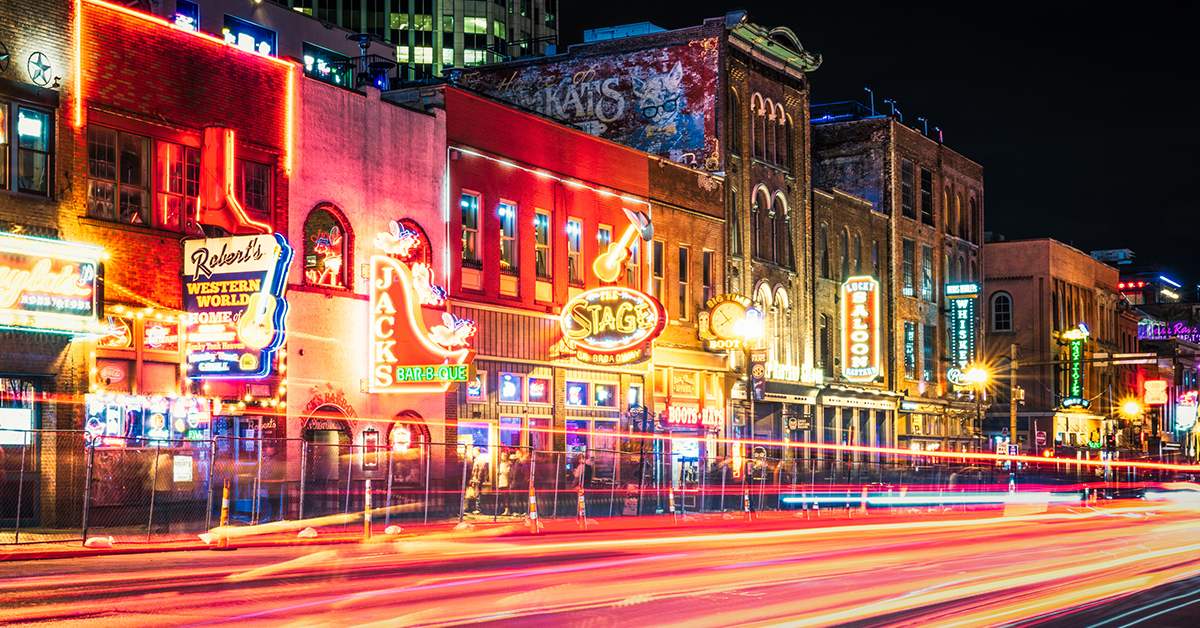Neon Signs Future Looks Bright: History of Neon Signs and Their LED Future
Today, we will explore the history of neon signs and their transition to LED technology. Let’s start from the beginning.
A Radiant Past: The Genesis of Neon
Neon was originally used for illuminated signs due to its distinctive properties that made it stand out in the advertising landscape. Its vibrant colors, particularly its bright red hue, captured attention even in crowded urban environments, making it an effective tool for businesses to attract customers. The creation of neon signs was primarily driven by the need for a visually striking and attention-grabbing advertising medium. Businesses sought illuminated signs to differentiate themselves from competitors and enhance their visibility, especially during nighttime hours when traditional signage may not be as effective. Neon signs provided a solution to this challenge, offering businesses a way to illuminate their storefronts and draw in potential customers with eye-catching displays.
Moreover, illuminated signs became increasingly desirable for businesses due to their ability to create a welcoming and inviting atmosphere. The warm glow emitted by neon signs added a sense of ambiance to streetscapes and storefronts, signaling to passersby that a business was open for business and ready to serve. This not only increased foot traffic but also contributed to the overall branding and image of the establishment. As urbanization progressed and cities became more densely populated, businesses recognized the importance of standing out in crowded marketplaces, leading to the widespread adoption of illuminated signs as a strategic marketing tool. Thus, the allure of neon signs lies in their ability to command attention, enhance visibility, and create a welcoming ambiance that appeals to businesses seeking to attract customers and distinguish themselves in competitive markets.
Crafting Luminescent Art: The Artistry Behind Neon Sign Production
The fabrication of neon signs was elevated to an art form, involving the delicate manipulation of glass tubes into intricate shapes, followed by the introduction of noble gasses and the subsequent application of an electric charge. The result was an illuminative masterpiece that could metamorphose the mundane into the extraordinary.
However, this radiant epoch bore an environmental burden, primarily attributed to the presence of mercury within the neon tubes. As societal consciousness evolved, concerns regarding materials and ecological repercussions prompted the neon sign industry to reassess its environmental impact.
Should we be concerned we skip from neon to LED without mentioning incandescent, fluorescent lights, etc?
LED Emergence: A Technological Renaissance
The emergence of Light Emitting Diode (LED) technology marked a significant milestone in the evolution of illuminated signage, ushering in a new era that challenged traditional practices. Initially met with skepticism by purists, LED swiftly established itself as the forefront of illumination innovation. Unlike its neon predecessor, LED offers comparable brilliance and vibrancy without the environmental concerns associated with traditional neon signage. This paradigm shift towards LED technology represents more than just a technological advancement; it signifies a conscientious choice toward sustainability and efficiency.
LED not only preserves the captivating allure of its traditional counterpart but also presents businesses with a pragmatic solution that aligns with modern economic and environmental sensibilities. By embracing LED technology, businesses can enjoy the same luminous impact while reducing energy consumption, maintenance costs, and environmental footprint. This transition underscores a strategic shift towards sustainability-driven practices within the signage industry, reflecting a broader commitment to corporate social responsibility. In essence, the emergence of LED neon represents a technological renaissance, where innovation converges with environmental consciousness to redefine the landscape of illuminated signage for the betterment of businesses and communities alike.
A Resurgence in Elegance: LED Neon Taking Center Stage
The resurgence of neon signs is now epitomized by the ascension of LED technology. Businesses can now embrace the aesthetic allure of neon without compromising fiscal responsibility or environmental stewardship. The LED revolution signifies a harmonious convergence of style and sustainability.
The Final Frontier of NEON AND LED
In summary, the future of neon signs looks bright with the advancement of LED technology. Let’s acknowledge the rich history, current progress, and promising future of LED signage. Here’s to the evolution of brilliance, where brightness meets responsibility, and each sign has a meaningful impact.

